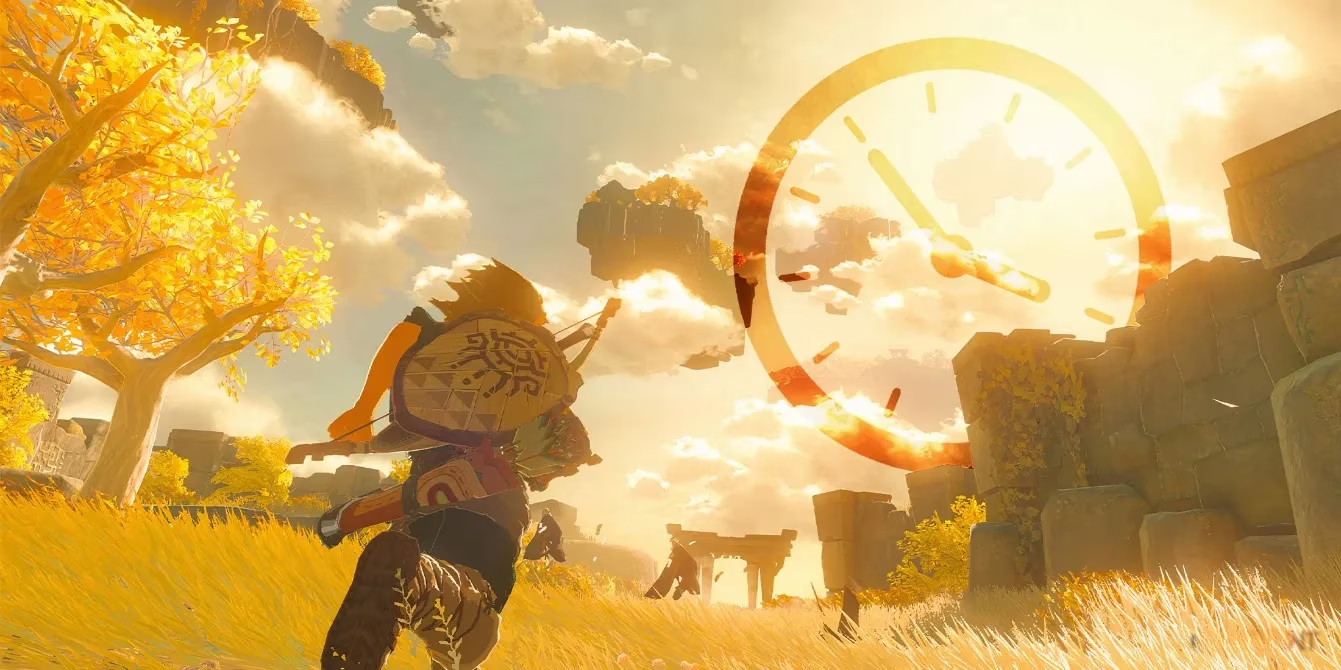How Time Travel Could Revolutionize Zelda's Open-World Future
Discover how Zelda's open-world evolution, from Breath of the Wild to Echoes of Wisdom, can be revolutionized with innovative time travel mechanics for dynamic exploration.
Since its groundbreaking 2017 release, The Legend of Zelda: Breath of the Wild has fundamentally reshaped Nintendo’s flagship franchise, transforming it into an open-world powerhouse. While the original 1986 NES title pioneered non-linear exploration, Breath of the Wild’s vast, physics-driven sandbox set a new benchmark—one expanded by 2023’s Tears of the Kingdom and 2024’s Echoes of Wisdom. The latter’s arrival silenced speculation about a return to classic linear design, cementing open-world as Zelda’s foreseeable future. Yet with this formula now spanning three consecutive titles, a critical question emerges: How can Nintendo inject fresh innovation? The answer might lie in one of the series’ oldest magical elements—time travel.

🌄 Transforming Exploration Through Temporal Shifts
Time travel isn’t new to Hyrule—Ocarina of Time and Majora’s Mask masterfully used it to morph environments between thriving kingdoms and apocalyptic wastelands. But in a modern open world like Tears of the Kingdom’s, the mechanic could achieve unprecedented scale. Imagine traversing a vibrant, pre-cataclysm Eldin region, then leaping forward to see its volcanoes erupt and reshape the terrain. Players wouldn’t just witness changes; they’d navigate them. A flooded Faron jungle in one era might become arid badlands in another, hiding puzzles requiring cross-temporal investigation. With maps now 100x larger than the NES original, the potential for discovery multiplies exponentially. Would you scour every cliffside in both timelines to uncover hidden shrines or resources?
⚙️ Mechanics Where Actions Echo Across Centuries
Beyond visuals, time travel could revolutionize gameplay through cause-and-effect systems. Oracle of Ages experimented with this—but an open-world framework could make choices feel monumental. Consider these hypothetical scenarios:
-
Building Legacy Projects: Helping laborers gather stones for a bridge in the past causes it to materialize centuries later, unlocking shortcuts.
-
NPC Ripple Effects: Saving a village elder might spawn a bustling town in the future, while failure leaves ruins haunted by regrets.
-
Resource Time-Locks: Rare materials decay or evolve across eras, forcing strategic jumps.
Such systems could create emergent stories, turning Hyrule into a dynamic clockwork where every decision resonates. What unintended consequences might arise from meddling with history?
🔄 Shattering Repetition with Temporal Freedom
Let’s face it—even beloved open worlds risk monotony after 200+ hours. Time travel offers a built-in solution: instant environmental variety. Players fatigued by Tears of the Kingdom’s rain-slicked highlands could shift to a sun-baked desert era mid-gameplay. This isn’t just cosmetic; it incentivizes revisiting locations with fresh objectives. A canyon impassable in the present might be traversable via an ancient glacier, while futuristic tech could override Sheikah puzzles. The mechanic could even combat "checklist fatigue"—instead of hunting 100 Koroks, you’d pursue era-specific secrets.
| Era Type | Exploration Focus | Gameplay Twist |
|---|---|---|
| Ancient Past | Untamed wilderness | Primitive tools, scarce settlements |
| Golden Age | Bustling cities | Social quests, political intrigue |
| Post-Collapse | Ruins & hazards | Survival mechanics, scarce resources |
⏳ Why Time Travel Fits Zelda’s DNA
Critics argue open-world Zelda risks stagnation, yet its DNA has always embraced temporal experimentation. Majora’s Mask’s three-day cycle created urgency without sacrificing freedom—a blueprint for modern systems. Meanwhile, Echoes of Wisdom proved Zelda can reinvent protagonists while keeping worlds nonlinear. Incorporating time mechanics wouldn’t abandon the BotW formula; it would deepen it. Environmental storytelling could flourish—a crumbled temple in 2025’s Hyrule might reveal tragic murals when visited in its prime. And let’s not forget combat: battling Guardians in one era versus their rusted husks in another offers tactical variety.
Ultimately, Zelda’s future hinges on balancing innovation with tradition. Time travel isn’t just nostalgic fan service—it’s a tool to make Hyrule’s vastness feel perpetually new. As the series approaches its fourth decade, might temporal rifts be the key to its next evolution?